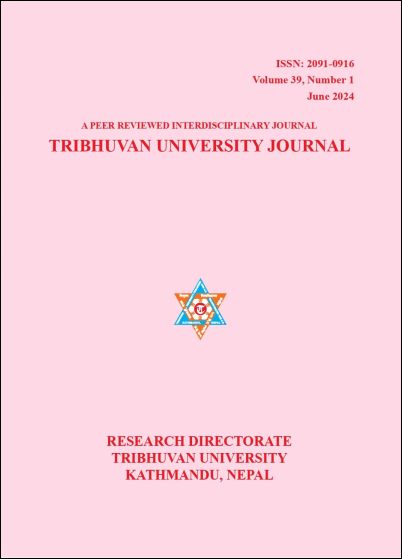Clusivity in Chamling, Bantawa, Bayung and Puma Language
DOI:
https://doi.org/10.3126/tuj.v39i1.66676Keywords:
Bantawa, Bayung, Chamling, exclusive, inclusive, Puma, typologyAbstract
This paper analyzes clusivity (inclusive and exclusive distinction) in the Kirati languages namely Chamling, Bantawa, Bayung and Puma within the typological framework. The data drawn in this paper were collected from the direct elicitation from the speakers they could represent the languages. The findings reveal that the Kirati languages like Chamling, Bantawa, Bayung and Puma are rich enough in the clusivity as they exhibit inclusive and exclusive distinction in the both dual and plural number. In Bantawa, the marker <-tsi> is realized as the second person dual inclusive marker whereas the marker <-tsija> as the first person dual exclusive marker. The first person plural inclusive is marked by <-n> and <-nka> in the case of the first person plural exclusive in the intransitive verb paradigm. In addition, Puma, Chamling and Bayung also share the first person dual and plural clusivities. The reflexes of the inclusive-exclusive marker may not appear in the same pattern from pronoun to the predicate. Bantawa and Puma have almost the complete copy morphemes that are realized even in the verb conjugation. But the Chamling and Bayung have partial morpheme to denote the clusivity. Typologically observed the Bodish group of the Tibeto-Burman languages, they do not exhibit the way Kirati languages do. For instance, the languages like Gurung, Nar-phu, Dolakha Newar, and Kathmandu Newar have clusivity only in the first-person plural number. Unlike others, Bhujel and Chhantyal have the same marker to indicate the first person inclusive and exclusive marker.
Downloads
Downloads
Published
How to Cite
Issue
Section
License

This work is licensed under a Creative Commons Attribution-NonCommercial 4.0 International License.
This license enables reusers to distribute, remix, adapt, and build upon the material in any medium or format for noncommercial purposes only, and only so long as attribution is given to the creator.
© Center for Research, Tribhuvan University

